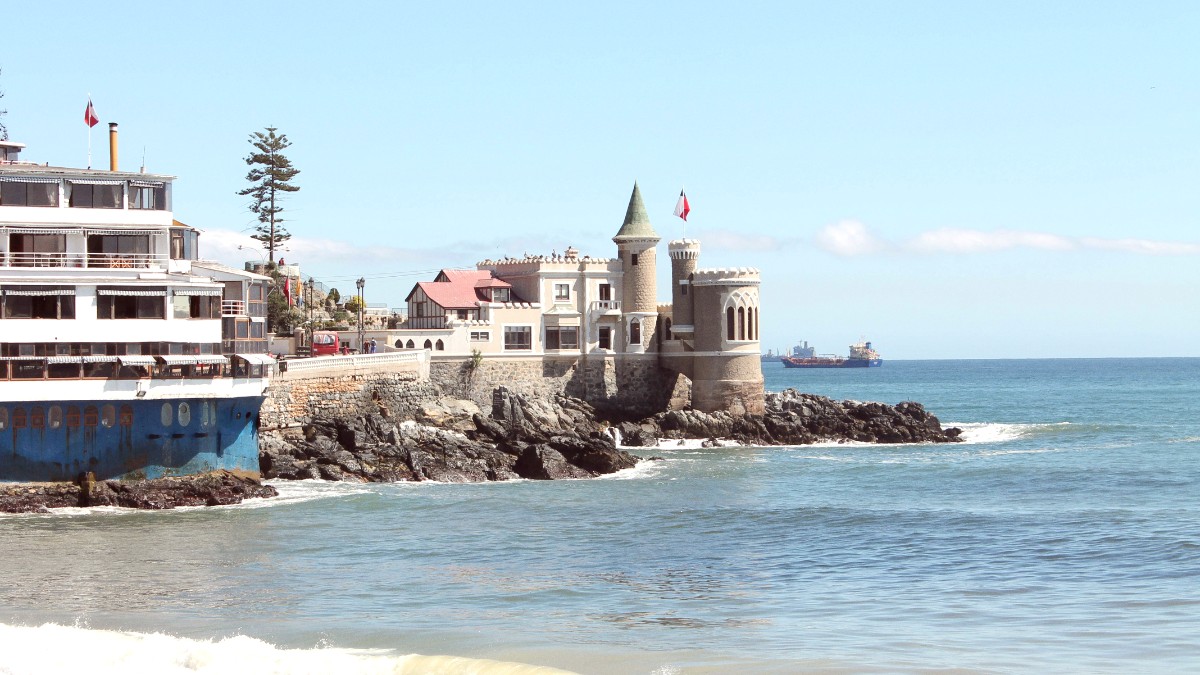
Chile
Later, German and Italian immigrants further shaped the culinary landscape, introducing new techniques and ingredients.
The food frequently proves hearty, comforting, and designed for sharing.
Central Chile, including Viña del Mar and Valparaíso, especially stands out for exceptional seafood dishes. Fresh fish prepared in various ways, shellfish baked or grilled, and hearty seafood stews are prominent.
The region also features traditional Chilean stews (cazuelas), baked turnovers (empanadas), and robust grilled meats (asados), especially beef. The Central Valley's proximity means fresh produce always stands available.
Nearby Casablanca Valley's wine production influences local dining, with many establishments pairing meals with regional wines, enriching the dining experience.
Chilean ceviche frequently features fresh raw fish (corvina or reineta) marinated in lime juice, with finely chopped red onion, cilantro, and a hint of chili.
Find it at seafood restaurants (marisquerías) along the coast.
Empanadas de Pino: A classic Chilean baked pastry filled with ground beef, onions, olives, and hard-boiled egg. Widely available at bakeries and street food stalls. Empanadas de Queso/Marisco: Filled with cheese or fresh seafood (shrimp and cheese, or machas – razor clams). Especially popular in coastal areas.
A versatile and delicious snack or light meal.
Pastel de Jaiba: A rich, creamy crab pie. Crab meat baked with cheese, cream, and sometimes bread crumbs. A specialty in seafood restaurants. Machas a la Parmesana: A regional specialty unique to the Valparaíso region. Razor clams baked in their shells with Parmesan cheese, white wine, and butter.
Must-try for seafood enthusiasts.
Chile is a major wine producer. Explore local varietals like Carmenere (Chile's signature grape), Cabernet Sauvignon, Sauvignon Blanc, and Chardonnay from nearby Casablanca Valley.
Terremoto: A sweet, potent cocktail with pipeño (young wine), pineapple ice cream, and grenadine. Chicha: A traditional fermented grape or apple drink, specifically popular during national holidays.
Several restaurants deliver a refined dining experience, focusing on fresh seafood and Chilean ingredients with a gourmet touch.
A wide array of mid-range restaurants presents a balance of quality, ambiance, and price. These excel for a pleasant meal without the formality or expense of fine dining.
For economical and authentic dining, Viña del Mar features several options.
This central market is ideal for experiencing local life. It features fresh produce, an array of seafood, and small, informal eateries where you can enjoy a simple, fresh meal.
It gives a glimpse into local culinary traditions.
During the summer season, various craft fairs (ferias artesanales) along the coastal promenade frequently include food stalls.
These present a chance to try local snacks and prepared foods while browsing crafts.
Pizzerias and pasta restaurants are widely available.
A strong culinary influence, offering ceviche and other specialties.
Chinese and Japanese restaurants (sushi) are popular choices.
Various international fast-food chains are present for quick meals.
Awareness of gluten-free (sin TACC or libre de gluten) and other allergens progresses in Chile, notably in larger urban centers. It is not universally understood.
Communication: Carrying a translation card explaining your specific dietary restrictions in Spanish is advisable. Larger, modern restaurants are more likely to cater to special requests.
Be cautious with traditional dishes, as many use wheat flour (e.g., empanadas) or may feature hidden gluten. Corn-based dishes (pastel de choclo, humitas) are naturally gluten-free.
Translation cards can be found online to bridge language barriers.Some local tour operators in Valparaíso/Viña del Mar present Chilean cooking classes, learning traditional dishes like empanadas or ceviche. Often combined with a market visit to source fresh ingredients.
The Casablanca Wine Valley, inland from Viña del Mar, delivers tours, wine tastings, and sometimes farm-to-table dining experiences.
Popular cookies consisting of two soft biscuits joined by a generous layer of dulce de leche (manjar), often covered in chocolate or powdered sugar.
A German-inspired fruit tart, popular throughout Chile, notably in the south, but found in bakeries everywhere. Common fillings include apples, berries, and peaches.
A sponge cake roll generously filled with dulce de leche. It is a simple yet delightful dessert found in many bakeries.
Utilize online platforms and travel blogs for current restaurant listings and reviews to find dining spots matching your preferences.
Check for recent updates, especially during seasonal changes, for optimal choices.
Local tourist information centers frequently share recommendations for eateries and advise on current food events.
A valuable resource for discovering hidden gems and authentic local spots.
Many establishments along Avenida Perú and Avenida San Martín feature panoramic Pacific vistas, creating a memorable dining atmosphere.
The Mercado Municipal presents a scene of fresh produce and seafood, offering an authentic glimpse into local culinary traditions.
A short trip to the Casablanca Wine Valley reveals beautiful vineyards, ideal for tours and wine tastings paired with scenic views.
Exploring Viña del Mar's cuisine is a central part of any visit. Be adventurous with local flavors and ask locals for their favorite 'picadas' for authentic experiences.